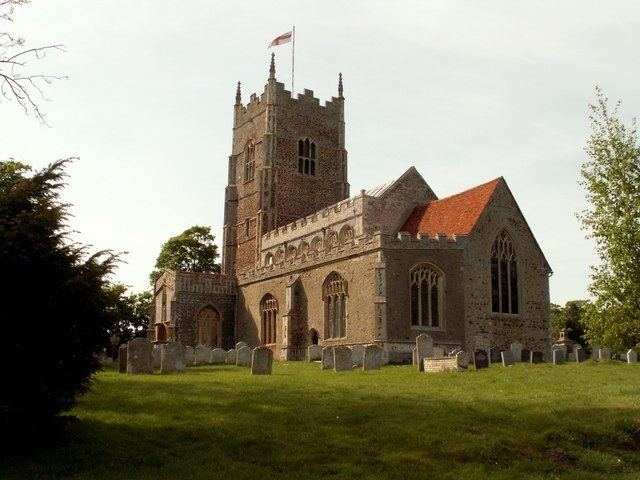Population 1,037 (2011) Sovereign state United Kingdom Local time Thursday 8:35 AM District Tendring | OS grid reference TM083262 Dialling code 01206 | |
 | ||
Weather 11°C, Wind W at 23 km/h, 85% Humidity | ||
Great Bromley is a village and civil parish in the Tendring district of Essex. It lies 6 kilometres (4 mi) south of Manningtree and 9 kilometres (6 mi) east of Colchester and includes the hamlets of Balls Green, Hare Green and Bromley Cross. The A120 trunk road (with the A133 as a spur off it) cuts right through the middle of the parish.
Contents
Map of Great Bromley, Colchester, UK
History
Ancient burial mounds have been found in and around Great Bromley.
The village church dates from the 14th and 15th centuries and is dedicated to Saint George but is sometimes referred to as the "Cathedral of the Tendring Hundred."
The village and the surrounding area, like much of East Anglia, had residents who were seething with Puritan sentiment during the early and middle years of the 17th century. By 1635, brothers Gregory and Simon Stone had departed for the Massachusetts Bay Colony as part of the wave of emigration that occurred during the Great Migration. They settled in Cambridge and Watertown, Massachusetts respectively.
Great Bromley Hall (now known as the Seven Rivers Cheshire home) was the ancestral seat of the Mannock family and dates to before the 17th century. One of the notable residents of the great home was Sir Thomas Bowes who was the Justice of the Peace for Essex during much of the 17th century. In that capacity, he was involved in the county response to the witchcraft hysteria that was then sweeping the populace and he dealt with those accused of witchcraft harshly. His son Paul Bowes achieved some degree of fame when he posthumously edited and published the journals associated with his uncle, Sir Simonds d'Ewes, a noted antiquarian. The work was published as "Journals of all the Parliaments during the Reign of Queen Elizabeth."
Great Bromley's Church suffered some bomb damage, losing the East window, during World War II. The village was situated in the militarily precarious position of being more or less on the boundary between two Groups of Fighter Command (the 11th and 12th). More specifically between the sectors known as Debden and Northweald. There was an RAF chain home low station, Air Ministry Experimental Station 24, and the site was known as RAF Bromley. Bombs were dropped by the Germans during the early part of the war when they were attempting to disrupt radar activity. This strategy was abandoned when bombing seemed to have little effect on any part of the chain system. Many of the above and below ground bunkers are still present. The wooden receiving towers have gone but one of the 315 ft steel tower remains. A guardhouse can still be seen on the radar site and also at the old entrance to the RAF camp off Mary Lane North.
In 2005, a motorist was shot in the back with a longbow during an apparent ambush on a country lane near Great Bromley. The man had stopped to help a woman who was crouching near a parked van, who later turned out to be the longbowman's accomplice. As the man approached the woman, he was shot in the back from 20 feet away, but was able to escape. The longbowman and his female assistant were never caught.
Today
In 2006, the church of St. George received a £2,000 grant from the Friends of Essex Churches Trust to repair the building's windows.
